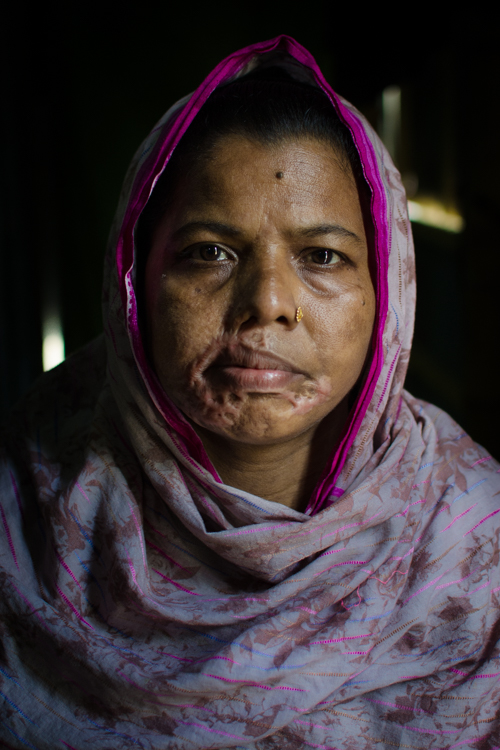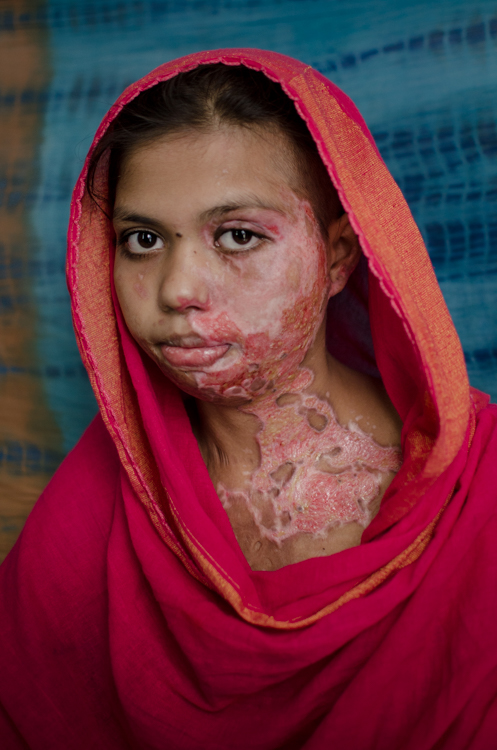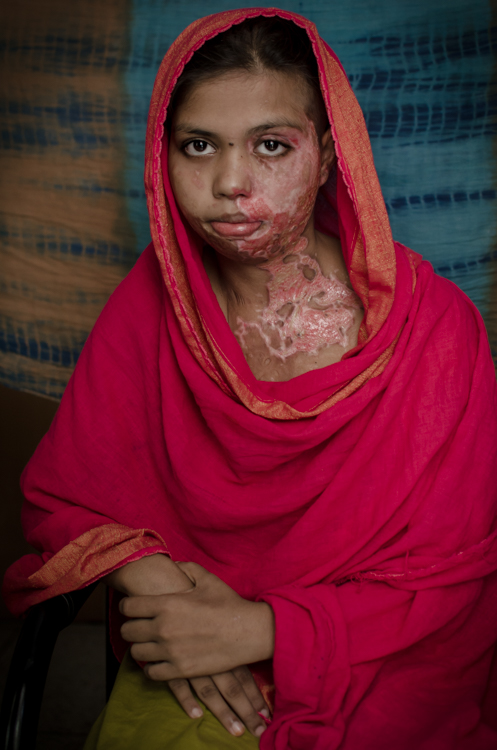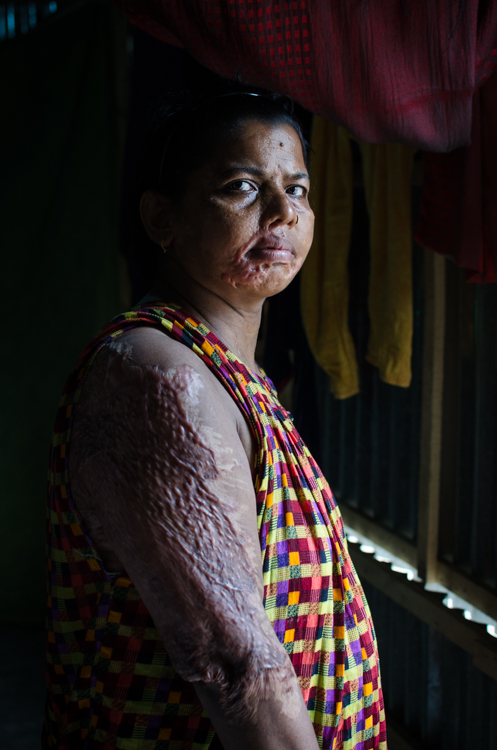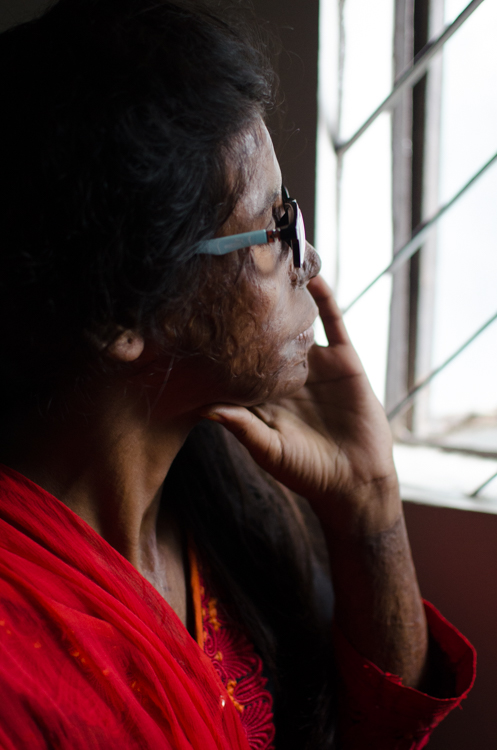Asma- An Inspiration for All
Asma is from a remote village in Bangladesh. In her village, a maximum of girls drop out of school at the primary level. One of the reasons for the high dropout rate is because students have to walk a mile, cross a river and then walk another mile to attend the local high school. Asma was the only girl in her village who was attending high school. When Asma was in high school a local man used to stalk Asma after school and he expressed his desire to marry her. Asma and her family rejected the marriage proposal because they did not approve of the man after which he became furious. Asma’s father was not interested in marrying his daughter at such a young age and he had high aspirations for Asma to continue her education. Fearing for her safety Asma’s family temporary shifted her to her aunt’s house which was much closer to her school. After a few months Asma was unable to continue living at her aunt’s place due to a personal reason and she returned home. At this time Asma and her family thought that the man had lost interest in Asma and would leave her alone. But the perpetrator and his family continued to harass them and began to make threats saying “we’ll see how you continue your studies.”On August 18, 1999 at around four o’ clock in the morning, thirteen year-old Asma was sleeping in a room with her mother, brother, and three sisters. Asma’s father was at the mosque for the fajr (morning) prayer when the man who had been pursuing her sneaked into her house, shone a flashlight over her, and threw acid targeting her face. At that moment, Asma screamed, her family woke up, and the attacker attempted to exit through a side door. The door was locked and held shut with a heavy pot full of water, making his escape difficult. Asma’s brother chased him and caught him. The attacker argued with Asma’s brother, even denying that he was behind the attack when his hand showed signs of acid burn indicating that when he threw the acid some of the acid came in contact with his hand. Finally, the police came and arrested the perpetrator.
Asma suffered from severe burns that destroyed the left side of her face including her left eye. At that time, most people in her community were not aware of what to do immediately after an acid attack or how to treat the burns. Asma’s family did not pour water over her face, fearing that it might cause further damage even though Asma was crying out in pain asking for water to be poured on her face to reduce the burning sensation. Still unsure of what to do, Asma’s uncle brought a local doctor who put egg whites on Asma’s face to temporarily treat the wounds. Two hours later, Asma was taken to the local hospital by boat and was given medicine for pain relief.
She was then transferred to another district hospital, where she stayed for two weeks. It took her four hours to get there, and even there they were unfamiliar with the treatment required for acid burns.
While on the phone with someone, Asma’s father heard about the burn unit at Dhaka Medical College Hospital (DMCH). She was taken there and where she met the staff of ASF for the first time. ASF provided all the logistics for her treatment in DMCH. She first received her skin grafting after one month of her stay in DMCH. She was released from DMCH six days after surgery. Her wounds were not fully healed, but the hospital was unable to accommodate her because there were other patients waiting to be admitted. It took three hours by bus, six hours by motorboat, followed by another boat ride and a long walk before she made it home. Asma returned to DMCH after one week to get her eye checked and remained there for two months, however nothing could be done. Around this time, the Rehabilitation Unit at ASF was established. Asma was able to stay there while undergoing a few more surgeries at DMCH. With the support of ASF 7 acid survivors including Asma were taken to Spain for further treatment.
For Asma, the journey to recovery has been painstakingly difficult. Reflecting on the time following her return from Spain, Asma commented “I had no interest or desire to continue my studies because my hopes were completely shattered.”
Despite her continues struggles Asma able to refocus on her education and was determined to make a living for herself. After providing Asma with training on making pressure garment (a medical accessory which is required for the healing process of burn injuries) she was recruited by ASF. This brought some stability in her life and Asma started showing some interest to continue her education. ASF admitted her in a school and provided her with education support to pay for her school expenses including the cost of accommodation and food. Asma successfully passed her S.S.C and H.S.C examinations and was recruited as a peer educator. As a peer educator she had to work with the professional counselor to provide psychosocial support to other acid victims. Asma is married and has a three year old daughter Of course, the suffering caused by the acid attack is a part of Asma’s life, and her present-day battles cannot be ignored. Recalling the past and details of the incident can be painful. When asked what changed most in her life following the acid attack, tears began rolling down Asma’s face as she uttered, “there is no night when my pillow is not wet”.
Moreover, the effects of the acid attack are still apparent in her life outside of home. As is the case with many survivors of acid attack, Asma continues to seek justice through the grueling court process. Asma and her family filed a case against the perpetrator immediately after the incident. It took three years before he was sentenced to lifetime imprisonment without bail.
However, the perpetrator and his family brought the case to high court and are trying to appeal for a lesser punishment. They continue to threaten Asma and her family. “Since my perpetrator is suffering in prison, his whole family only has the goal of revenge…to put my father and brother in jail. And…if he‟s appealing, he might come back and we do not know what he is going to do. He is already indirectly threatening us, saying that he will do this and that when he comes back….that he‟ll kill my dad, he‟ll kill my brother. Even when I say „I‟m good, I‟m fine,‟ with all this in mind, my whole life has actually been turned upside down….the cruelty in my life started the day he threw acid on me.”
It is difficult for Asma and her family to put this traumatic incident behind them. It has been eleven years since the incident, and Asma and her family still must confront the perpetrator to keep him in jail. Asma asserted, “The justice system, what are they supposed to do? They can‟t do anything before the incident happens…whatever has been done is done. People say, „What‟s the point in giving him punishment now because what he‟s done is done?‟ But this is the only possible source of peace for us. He has at least been punished. This is my mental peace…that he‟s not any better off than me….”
And the battle with facing society still remain. Some people question if Asma could have helped prevent the attack. “Literate or illiterate societies, people mindlessly ask, „He asked you to marry him. Why didn‟t you just marry him?‟ But a person gets a lot of marriage proposals…you can‟t just marry all of them. If my dad married me off to my perpetrator, somebody else could have just as well thrown acid on me. Sometimes it hurts…people should think that I also have right to say no before they ask something.”
Though she had to face many obstacles but she says that her biggest strength that got her through the difficult time was her family “My daughter is very kind, she understands that something has happened to me, but she never asks about it. She does not make me feel bad. My own family of course does not question me about it, even my in-laws do not.” Asma also acknowledge ASF’s cooperation as a main driving force that supported her during the most crucial time of her life. “If ASF wasn‟t there then girls like me would have to face a lot of struggles. I think this is the place of peace which gives shelter to people like us.”
Her wounds were not fully healed, but the hospital was unable to accommodate her because there were other patients waiting to be admitted. It took three hours by bus, six hours by motorboat, followed by another boat ride and a long walk before she made it home.
Asma returned to DMCH after one week to get her eye checked and remained there for two months, however nothing could be done. Around this time, the Rehabilitation Unit at ASF was established. Asma was able to stay there while undergoing a few more surgeries at DMCH. With the support of ASF 7 acid survivors including Asma were taken to Spain for further treatment.
For Asma, the journey to recovery has been painstakingly difficult. Reflecting on the time following her return from Spain, Asma commented “I had no interest or desire to continue my studies because my hopes were completely shattered.”
Despite her continues struggles Asma able to refocus on her education and was determined to make a living for herself. After providing Asma with training on making pressure garment (a medical accessory which is required for the healing process of burn injuries) she was recruited by ASF. This brought some stability in her life and Asma started showing some interest to continue her education. ASF admitted her in a school and provided her with education support to pay for her school expenses including the cost of accommodation and food. Asma successfully passed her S.S.C and H.S.C examinations and was recruited as a peer educator. As a peer educator she had to work with the professional counselor to provide psychosocial support to other acid victims. Asma is married and has a three year old daughter
Of course, the suffering caused by the acid attack is a part of Asma’s life, and her present-day battles cannot be ignored. Recalling the past and details of the incident can be painful. When asked what changed most in her life following the acid attack, tears began rolling down Asma’s face as she uttered, “there is no night when my pillow is not wet”.
Moreover, the effects of the acid attack are still apparent in her life outside of home. As is the case with many survivors of acid attack, Asma continues to seek justice through the grueling court process. Asma and her family filed a case against the perpetrator immediately after the incident. It took three years before he was sentenced to lifetime imprisonment without bail. However, the perpetrator and his family brought the case to high court and are trying to appeal for a lesser punishment. They continue to threaten Asma and her family.
“Since my perpetrator is suffering in prison, his whole family only has the goal of revenge…to put my father and brother in jail. And…if he‟s appealing, he might come back and we do not know what he is going to do. He is already indirectly threatening us, saying that he will do this and that when he comes back….that he‟ll kill my dad, he‟ll kill my brother. Even when I say „I‟m good, I‟m fine,‟ with all this in mind, my whole life has actually been turned upside down….the cruelty in my life started the day he threw acid on me.”
It is difficult for Asma and her family to put this traumatic incident behind them. It has been eleven years since the incident, and Asma and her family still must confront the perpetrator to keep him in jail. Asma asserted, “The justice system, what are they supposed to do? They can‟t do anything before the incident happens…whatever has been done is done. People say, „What‟s the point in giving him punishment now because what he‟s done is done?‟ But this is the only possible source of peace for us. He has at least been punished. This is my mental peace…that he‟s not any better off than me….”
And the battle with facing society still remain. Some people question if Asma could have helped prevent the attack. “Literate or illiterate societies, people mindlessly ask, „He asked you to marry him. Why didn‟t you just marry him?‟ But a person gets a lot of marriage proposals…you can‟t just marry all of them. If my dad married me off to my perpetrator, somebody else could have just as well thrown acid on me. Sometimes it hurts…people should think that I also have right to say no before they ask something.”
Though she had to face many obstacles but she says that her biggest strength that got her through the difficult time was her family “My daughter is very kind, she understands that something has happened to me, but she never asks about it. She does not make me feel bad. My own family of course does not question me about it, even my in-laws do not.” Asma also acknowledge ASF’s cooperation as a main driving force that supported her during the most crucial time of her life. “If ASF wasn‟t there then girls like me would have to face a lot of struggles. I think this is the place of peace which gives shelter to people like us.”


